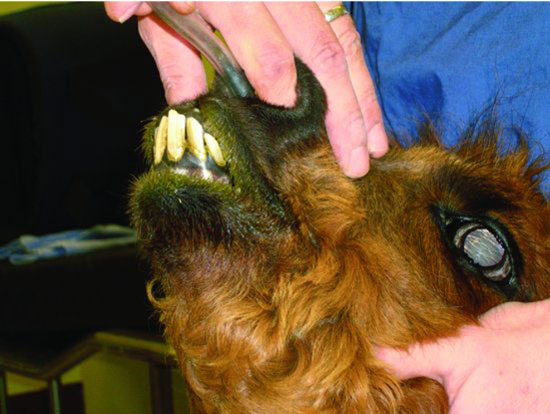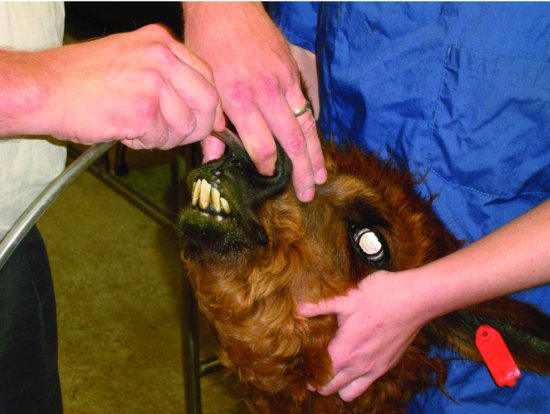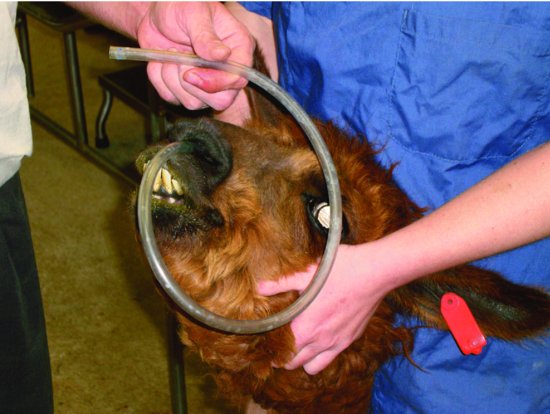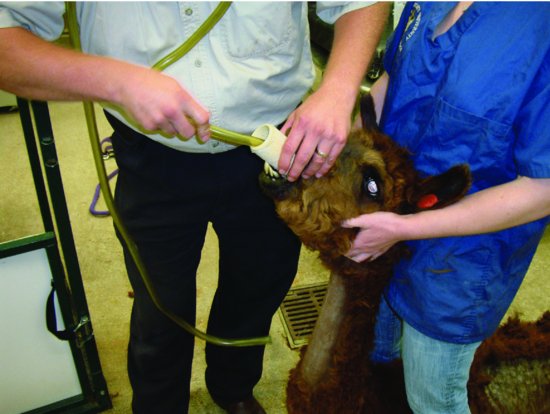Figure 41.2 The index finger is used to guide and verify correct placement of the tube prior to firm insertion.

Figure 41.3 Resistance to passage diminishes considerably after the tube has traversed the nasopharynx into the pharynx.

Figure 41.4 Intubation is facilitated by swallowing, and correct placement is verified by palpation of the tube in the esophagus, aspiration resulting in negative pressure in the tube, and auscultation of bubbles in the C1 during infusion of air into the tube.

Orogastric Intubation
Orogastric intubation requires firm restraint, and sedation facilitates this procedure if the condition of the patient is suitable to the use of sedatives (e.g., butorphanol at 0.1 mg/kg IV or xylazine at 0.2 mg/kg IV). In adult camelids, the oral cavity will accommodate a tube approximately 2.54 cm (1 inch) in diameter. The oral cavity of pre-weaned crias will allow tubes of approximately 1 cm in diameter. Oral feeding tubes up to 5-mm in diameter can be used in neonates (<30 days old). The handler must restrain the head so that movement is minimized. An oral speculum is placed into the mouth and held firmly in place to prevent the patient from biting the tube (Figure 41.5). PVC pipes cut to appropriate lengths and coated with rubber or elastic tape are suitable for use as mouth speculums (adult = 3- to 5-cm diameter; pre-weaned crias 1.5- to 2.5-cm diameter; neonates 1-cm diameter). The tube is advanced until swallowing is observed at which time the tube can be advanced into the esophagus and C1 (Figure 41.6). If the progress of the tube stops or a significant increase in resistance is noted without any swallowing reflex, then the position of the tube must be re-evaluated to ensure proper placement in the oral cavity and that the tube has not become lodged between the teeth. Passage of the tube can be facilitated by blowing air through the tube throughout passage (Figure 41.7).
Figure 41.5 An oral speculum constructed of a short length of PVC pipe covered with adhesive tape is used to keep the mouth open during insertion of an orogastric tube.

Stay updated, free articles. Join our Telegram channel

Full access? Get Clinical Tree


